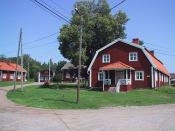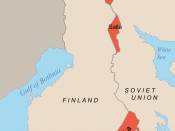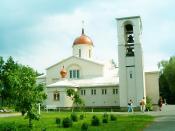Focus on Finland and the Northern Dimension
Monica Rodriguez Paz
Tourism
INFLUENCES ON FINLAND
I). - A BRIEF VIEW ON ITS HISTORY
THE SWEDISH REIGN
Until the middle of the 12th century, the geographical area that is now Finland was a political vacuum, and interesting to both its western neighbour Sweden and its eastern neighbour Russia. The western and southern parts of Finland were tied to Sweden and the Western European cultural sphere, while eastern Finland, i.e. Karelia, became part of the Russo-Byzantine world.
As a consequence of Swedish domination, the Swedish legal and social systems took root in Finland. Finland's most important centre was the town of Turku, founded in the middle of the 13th century. It was also the Bishop's seat. In 1362, Finns were given the right to send representatives to the election of the king in Sweden, and in the 16th century this right was extended to include representation in the Swedish Diet.
The Reformation started by Luther in the early 16th century also reached Sweden and Finland, and the Catholic Church consequently lost out to the Lutheran faith.
During its period as a great power (1617-1721), Sweden extended its realm around the Baltic and managed, due to the weakness of Russia, to push the Finnish border further east. With consolidation of the administration in Stockholm, uniform Swedish rule was extended to Finland in the 17th century. Swedes were often appointed to high offices in Finland, which strengthened the position of the Swedish language in Finland.
FINLAND A GRAND DUCHY OF RUSSIA
When Sweden lost its position as a great power in the early 18th century, Russian pressure on Finland increased, and Russia conquered Finland in the 1808-1809 war with
When Finland was joined to Russia in 1809 it became an autonomous Grand Duchy. The Grand...


